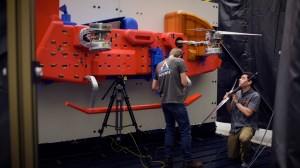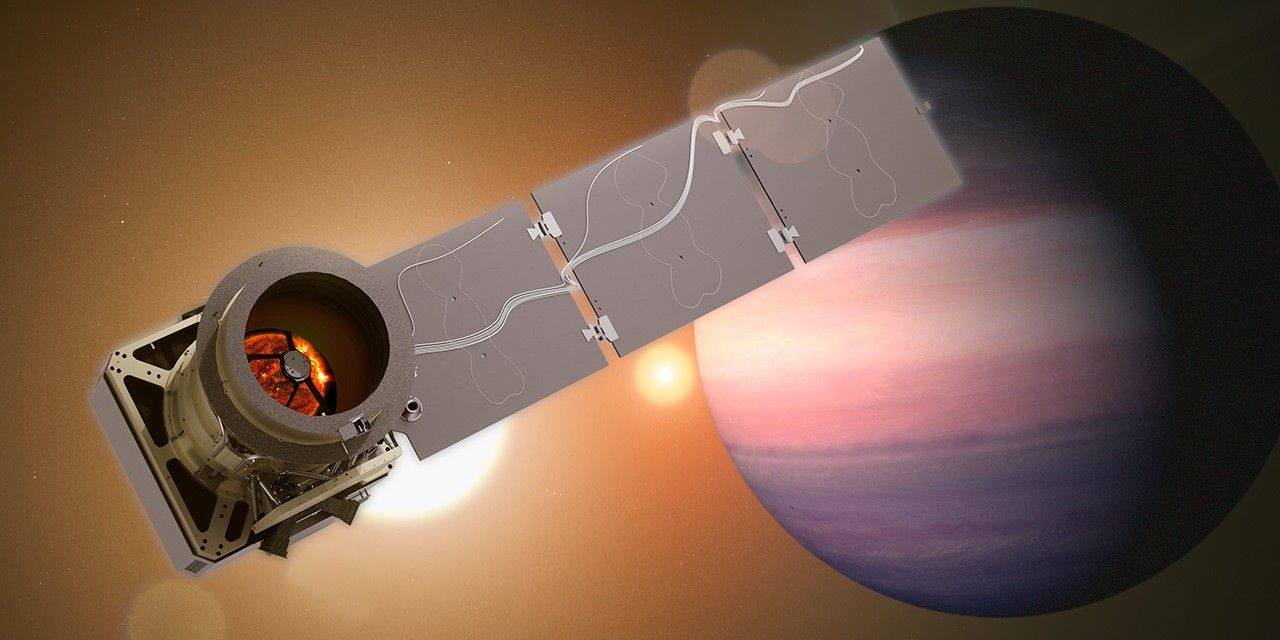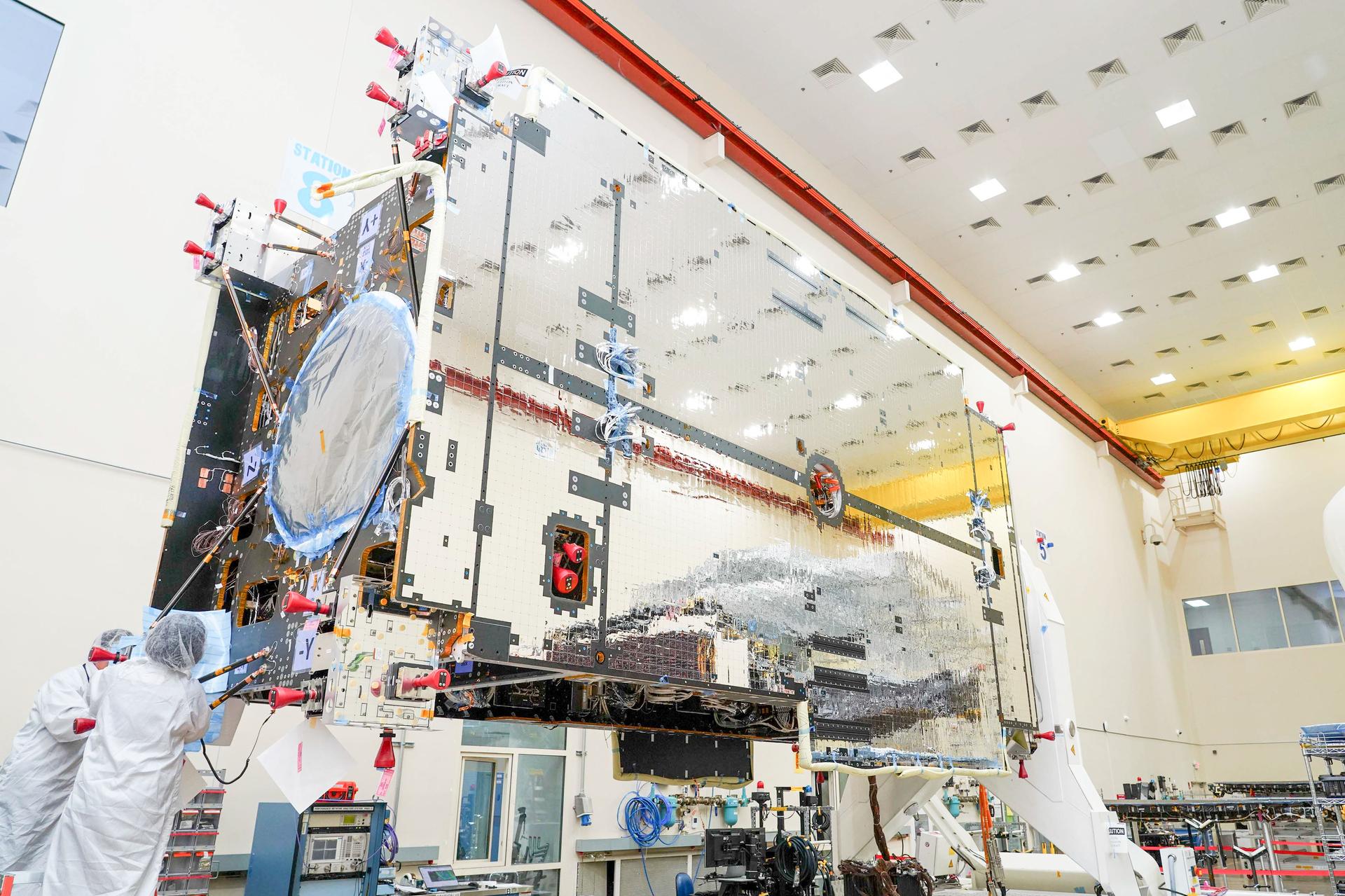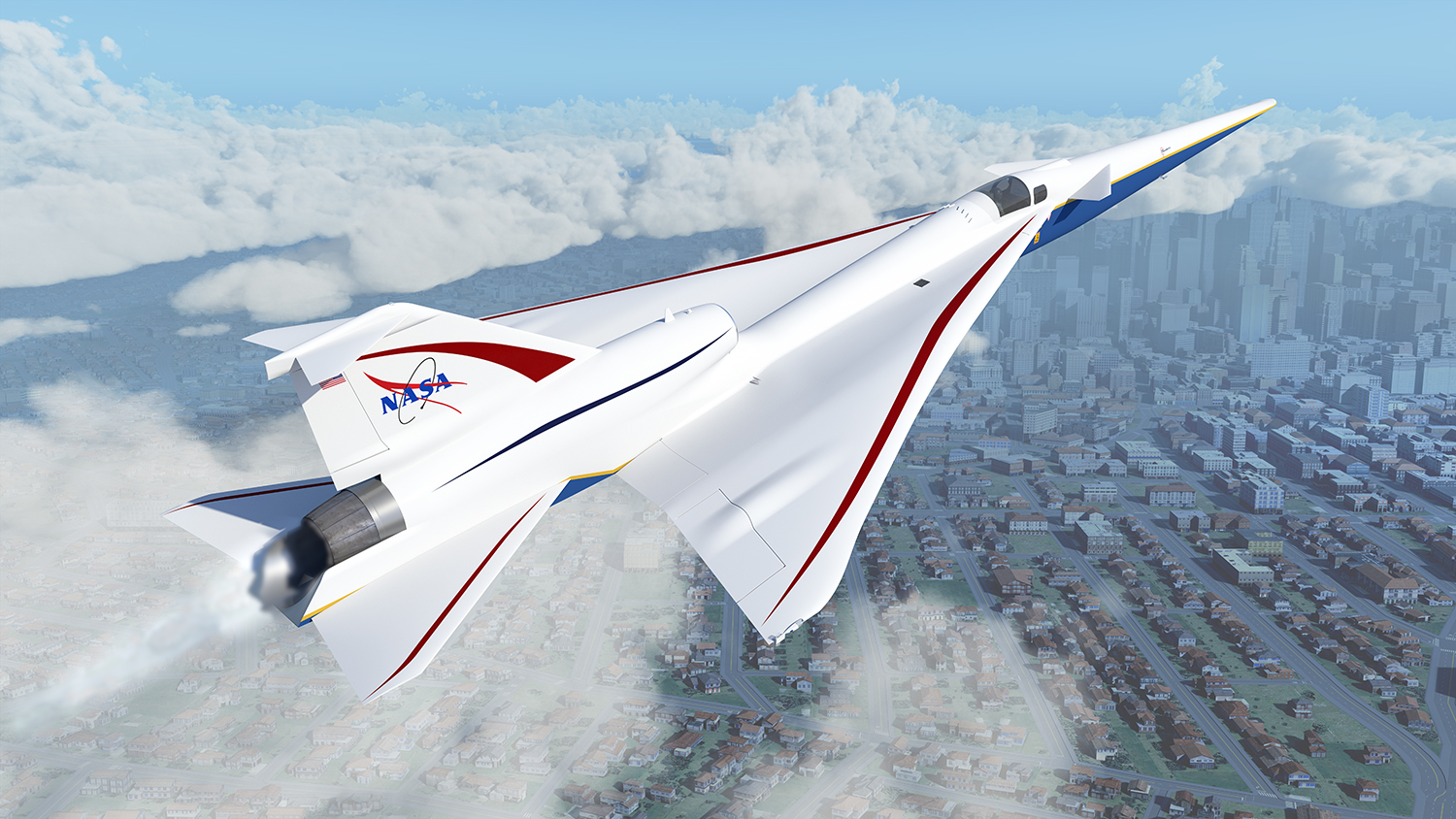
For the deserts of Southern California, the major milestones of aviation have long been marked by the unique sights, and sounds, of flight.
From the late Chuck Yeager’s breaking of the sound barrier in 1947, to the space shuttles’ approach and landing at NASA’s Armstrong Flight Research Center (then Dryden) in Edwards, and through today, one recognizable sound is the sonic boom – a loud, sometimes startling event that we hear on the ground when an aircraft overhead flies faster than the speed of sound, also called supersonic speed.
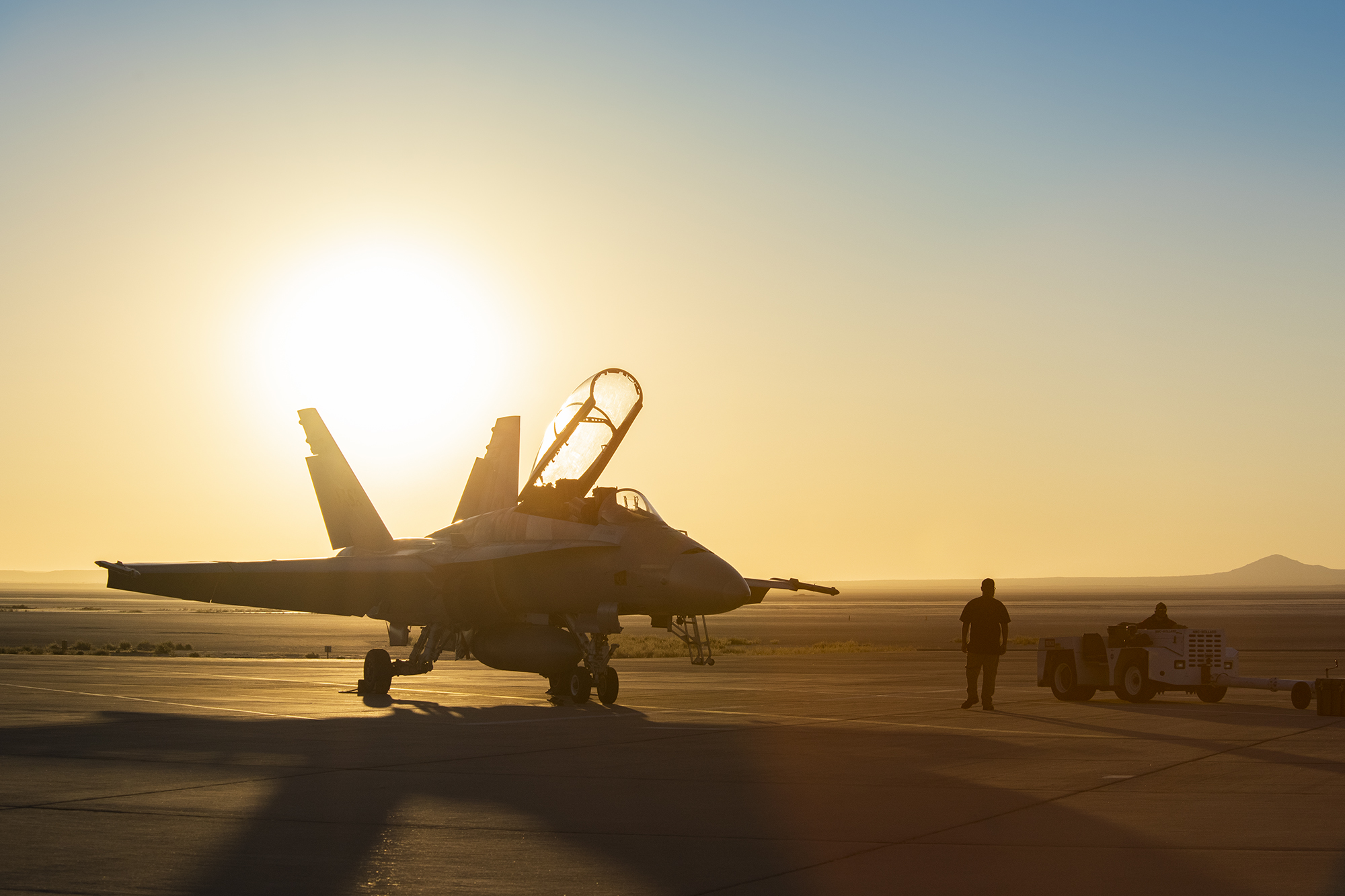
NASA, for decades, has led the effort to study sonic booms, the loudness of which are considered the key barrier to enabling a future for overland, commercial supersonic aircraft. That future will be closer to reality when the agency’s X-59 Quiet SuperSonic Technology (QueSST) airplane takes to those familiar skies in 2022, taking the first steps to demonstrating the ability to fly at supersonic speeds while reducing the sonic boom to a significantly quieter sonic thump.
While NASA will fly the X-59 over communities around the U.S. as early as 2024 to analyze the public’s perception and acceptability of quiet supersonic flight, the agency will first need to prove that the X-plane is as quiet as it’s designed to be.
To do this, NASA will measure the sound of the sonic thumps in the Mojave Desert using cutting edge technology – a brand new, state-of-the-art ground recording system for a brand new, state-of-the-art X-plane.
NASA has contracted Crystal Instruments of Santa Clara, California to deliver a high-fidelity sonic boom – and soon to be, a quiet sonic thump – recording system, capable of providing the data necessary for the agency to validate the acoustic signature of the X-59.
“This will be the first time that we have a single system across NASA to do this research, and it will incorporate a lot of newer technologies to allow us to get this done,” said Larry Cliatt, NASA’s tech lead for the acoustic validation phase of the NASA’s Low-Boom Flight Demonstration mission. “I consider it the next generation of sonic boom, and soon to be quieter sonic thump, recording systems.”
NASA will utilize the Crystal Instruments Ground Recording System, or CI-GRS for short, to gather time, waveform, and spectral data related to sonic booms and sonic thumps. The CI-GRS will also feature the ability for NASA to install custom software and algorithms to perform various specialized operations for real-time sonic thump analysis.
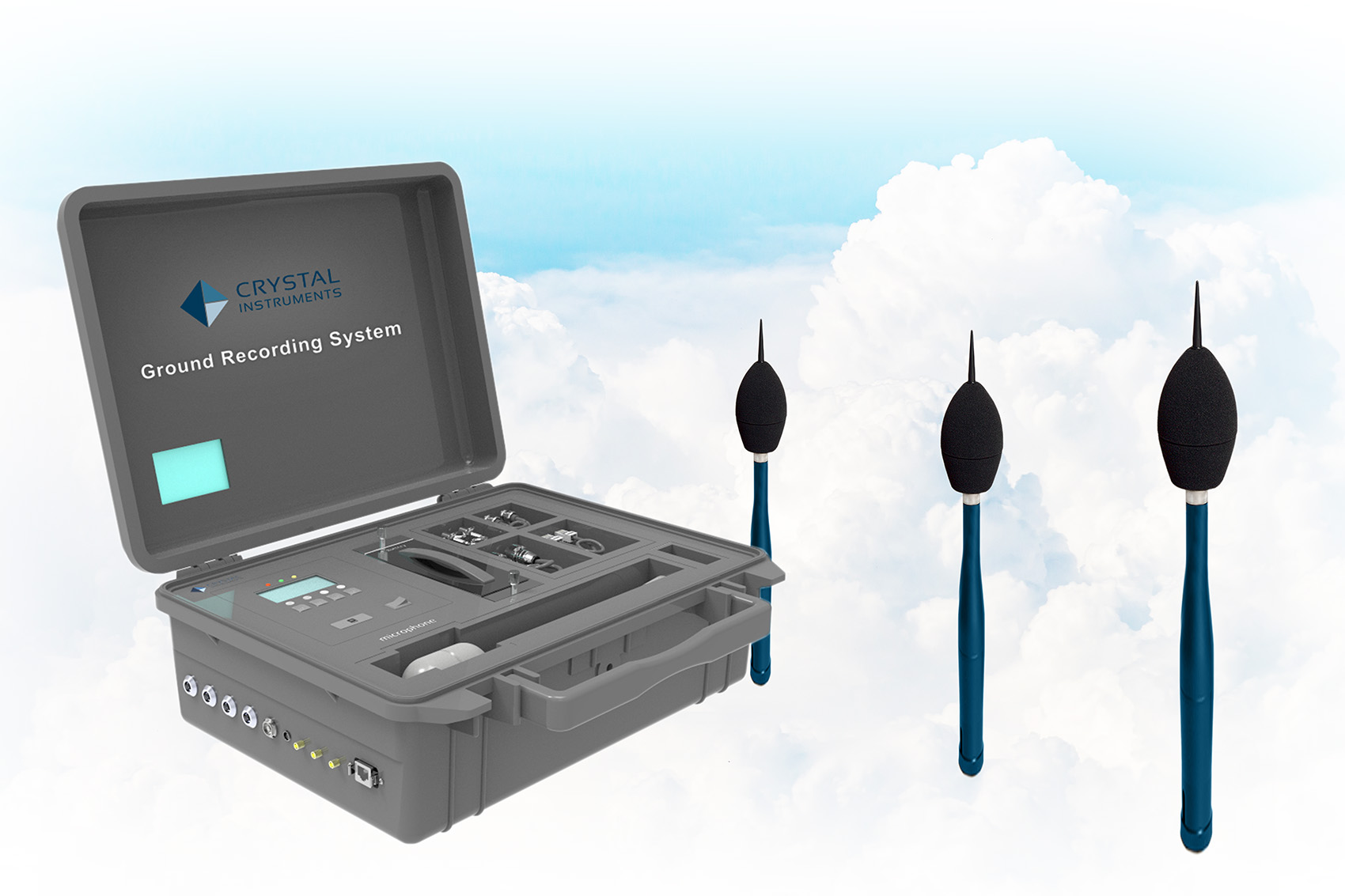
With this technology, NASA will have the ability to extract, review, and analyze specific data from a recording. For example, the CI-GRS will have the capability to accommodate software that can distinguish a low-amplitude sonic thump from the X-59 among other ambient sounds. That software will also be able to calculate a number of different types of acoustic metrics, including perceived sound level, which is the currently accepted measure for sonic boom loudness.
“What we are building is a data acquisition system that will use the latest advancements in technology, with cutting edge hardware and software capabilities, so that NASA can capture the high-quality sonic boom data they need,” said Darren Fraser, Crystal Instruments vice president of sales.
The first deliveries of the CI-GRS are expected to be deployed for initial field testing at NASA Armstrong, and later, some will deploy outside Edwards Air Force Base with units spread out as a 30-nautical-mile-long ground microphone array. This will be part of the next rounds of the Carpet Determination in Entirety Measurements flights, called CarpetDIEM for short.
These flights will simulate the acoustic validation phase for the X-59 by deploying an aircraft from NASA Armstrong, which will fly over the array at supersonic speeds, testing the units’ ability to record sonic boom data, before they capture the X-59’s quiet sonic thumps.
The lessons learned from the CarpetDIEM tests will facilitate any necessary updates and modifications for the final CI-GRS design, which will then be used in the same method for the X-59 with as many as 70 ground recording stations.
Another requirement NASA will need the CI-GRS to meet will be its ability to operate remotely. In previous, similar supersonic acoustic research efforts, NASA deployed sonic boom recorders in the field, and collected the sensors at the end of each test day. A 30-mile-long microphone array in the Mojave Desert, however, presents a logistical challenge.
“This ground recording system will be more robust and ruggedized when it comes to its operational use, and that’s what we anticipate, with the ability to deploy for several days at a time,” said Cliatt. “These will also incorporate two-way communications so that they can be deployed over a large area when the X-59 flies over communities starting in 2024, so the ultimate total of 175 of these can be controlled from a single remote host.”
The next CarpetDIEM flights are expected for late 2021.
“The CI-GRS is going to be a first of its kind, much like the X-59, and I think there will be a lot of firsts in a new age of potential commercial supersonic travel,” said Fraser. “We think this will set the stage for the future, and I think that’s what everybody wants to look toward.”
Matt Kamlet























